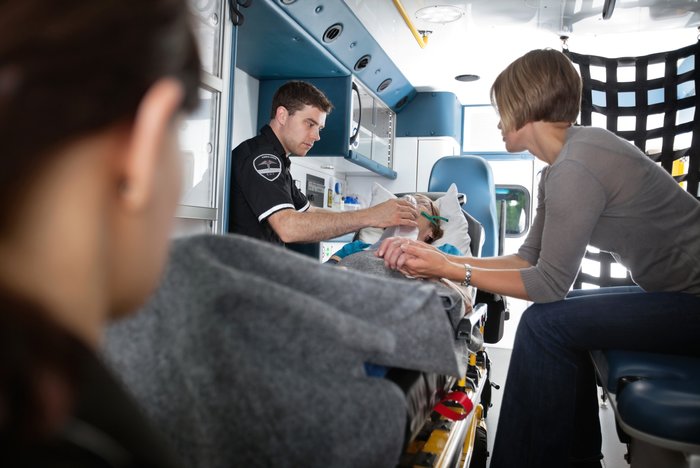
When was the last time you worked a code? If you serve a busy, urban area, or a population heavy on retirees, you probably remain proficient in advanced cardiac life support (ACLS). Drug therapies and dosages, intubation procedures, and post-resuscitation care are part and parcel to busy EMS systems. But what if you work in a slow-paced, rural setting, where the calls are few and far between? What happens to your ACLS skills if you rarely use them? Most likely, you lose them.
Training for cardiac arrest scenarios is fundamental to proficient patient care. Even if you work frequent codes, there is always room for improvement. The key is to design your training to be fully inclusive: It should not only include cardiology, drug therapy, and treatment procedures but also the equipment that must always be on hand. And one of the most important pieces of equipment for cardiac arrest—one that is typically not incorporated into training scenarios—is the portable suction pump.
Because a blog article cannot cover the entire scope of code training, let’s begin with the basics of EKG recognition and then jump to the necessary equipment, to ensure your training scenarios cover each end of the spectrum.
EKG Basics
Most paramedics can recognize the arrhythmias of cardiac arrest. The patient will exhibit one of the following:
- Asystole
- Ventricular fibrillation
- Ventricular tachycardia
- Pulseless electrical activity
But what about the patient who is alive when you arrive on scene, only to deteriorate before your eyes? Some arrhythmias can lead to cardiac arrest, which is why proper EKG interpretation is crucial to preventing an arrest. As a quick review, here are the basic steps to interpreting an EKG¹, each of which can help direct your course of treatment:
- Heart rate (Fast? Slow? Regular?) – How does the patient look? Always remember to treat the patient, not the monitor!
- P wave (Normal shape? Present? Followed by QRS?) – Complete dissociation from the QRS indicates the dangers of a third-degree block.
- PR interval (Normal? Short? Long? Irregular?)
- QRS interval (Normal? Short? Long? Irregular?)
- ST segment (Generally a normal shape? Elevated—STEMI!) If a STEMI is indicated, TIME is of the essence! Act quickly—the patient most likely needs a cath lab!
- T wave (Normally shaped? Tall? Short? Wide?)
- U wave (Present?)
Just like a head-to-toe exam, EKG interpretation must be methodical. By recognizing dangerous arrhythmias, and treating promptly, you may stave off an arrest before it happens.
Practice, Practice, Practice
Running practice code scenarios is a great way to prepare for the inevitable arrest. It’s also a great team-building strategy. Here are a few pointers:
- Designate roles: Just as when on scene, practice scenarios should have clearly defined roles. Designate the team leader, a person to handle the airway, one to initiate compressions, and one to establish IVs and drug therapy. Switch off with each scenario. That way, everyone becomes well-versed in their role, and it reinforces an orderly course of treatment.
- Make it realistic: Place the mannequin in a challenging position, such as in a tight room, a car, or a dimly lit area. Most codes occur in less-than-ideal settings. Don’t assume your patient will code in a well-lit, spacious scene. Practicing difficult scenarios will better prepare you for real-world situations.
- Practice regularly: Designate a recurring time in the training calendar to practice code scenarios. Don’t wait until your certification comes due. To remain proficient, you must practice often, so mark a day at least every other month to bring your crew together to train.
Why Include Suction?
To be effective, practice codes must be realistic. It is critical to not only verbalize each treatment step but to also simulate their application. And the one step that is usually excluded is suctioning. Even the most realistic simulators typically don’t include suction scenarios, which means many practice codes neglect the need for portable suction. But practice makes perfect, so be sure to include the portable suction pump. Here are some tips:
- Make the portable suction unit part of your ACLS assemblage, both in practice and real life.
- Designate someone to operate the suction unit in the event of a cardiac arrest.
- Ensure your suction pump is operable, by checking it at the start of each shift.
- Recognize the need for suction, which includes:
- Clearing the airway of blood, mucus, and vomit
- Visualizing the cords during intubation
- Removing traumatic debris, like clots, teeth, and tissue
Training scenarios play a critical role in paramedic proficiency. So, be sure to train well and train often and always include your portable suction pump.
¹2017, EKG Interpretation Checklist, EMS1.com, https://www.ems1.com/cardiac-care/articles/291406048-EKG-interpretation-checklists














